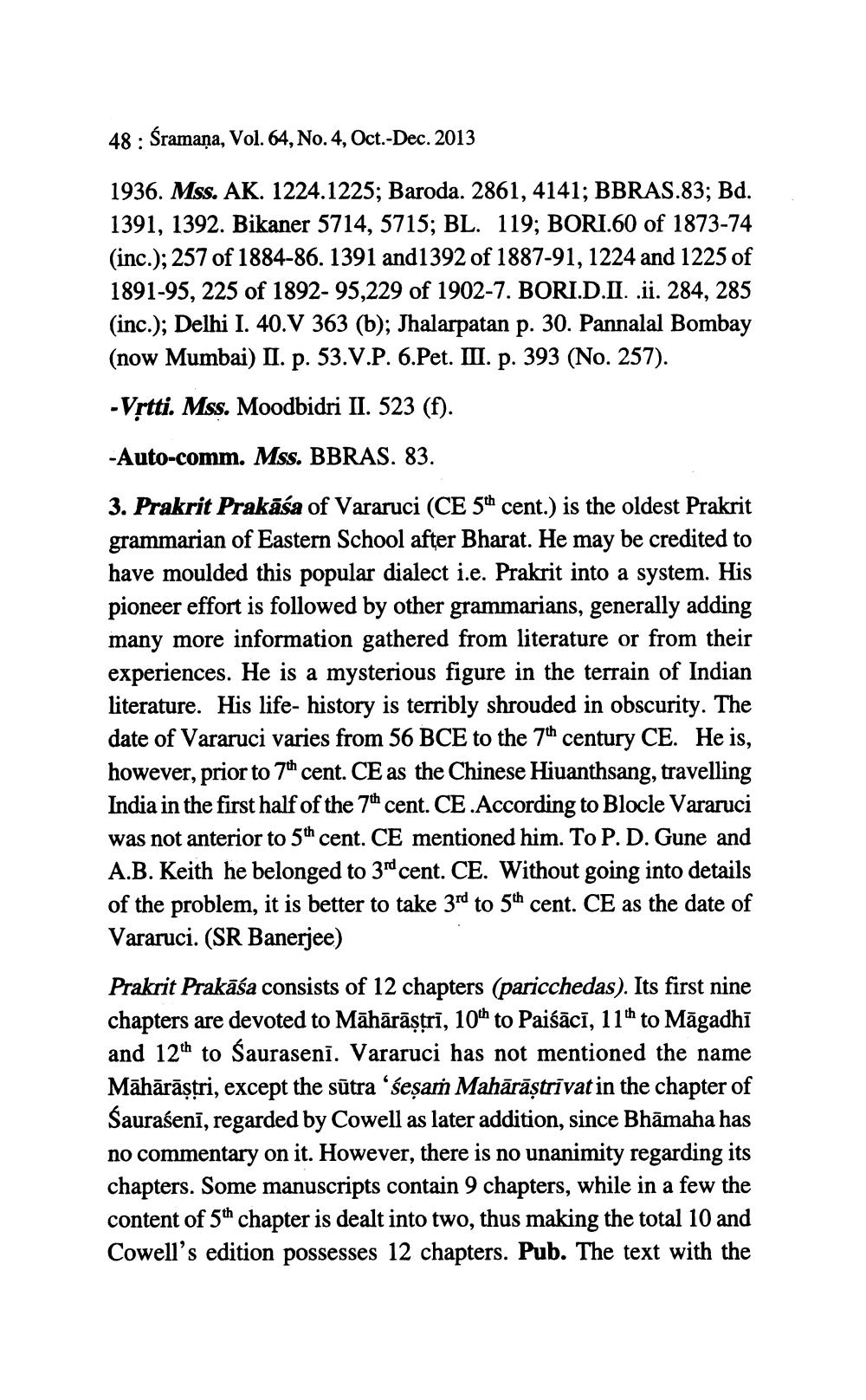________________
48 : Śramaņa, Vol. 64, No. 4, Oct.-Dec. 2013
1936. Mss. AK. 1224.1225; Baroda. 2861, 4141; BBRAS.83; Bd. 1391, 1392. Bikaner 5714, 5715; BL. 119; BORI.60 of 1873-74 (inc.); 257 of 1884-86. 1391 and 1392 of 1887-91, 1224 and 1225 of 1891-95, 225 of 1892-95,229 of 1902-7. BORI.D.II. .ii. 284, 285 (inc.); Delhi I. 40.V 363 (b); Jhalarpatan p. 30. Pannalal Bombay (now Mumbai) II. p. 53.V.P. 6.Pet. III. p. 393 (No. 257).
-Vrtti. Mss. Moodbidri II. 523 (f).
-Auto-comm. Mss. BBRAS. 83.
3. Prakrit Prakāśa of Vararuci (CE 5th cent.) is the oldest Prakrit grammarian of Eastern School after Bharat. He may be credited to have moulded this popular dialect i.e. Prakrit into a system. His pioneer effort is followed by other grammarians, generally adding many more information gathered from literature or from their experiences. He is a mysterious figure in the terrain of Indian literature. His life-history is terribly shrouded in obscurity. The date of Vararuci varies from 56 BCE to the 7th century CE. He is, however, prior to 7th cent. CE as the Chinese Hiuanthsang, travelling India in the first half of the 7th cent. CE.According to Blocle Vararuci was not anterior to 5th cent. CE mentioned him. To P. D. Gune and A.B. Keith he belonged to 3rd cent. CE. Without going into details of the problem, it is better to take 3rd to 5th cent. CE as the date of Vararuci. (SR Banerjee) Prakrit Prakāśa consists of 12 chapters (paricchedas). Its first nine chapters are devoted to Māhārā trī, 10th to Paiśācī, 11th to Māgadhi and 12th to Saurasenī. Vararuci has not mentioned the name Māhārāștri, except the sūtra ‘seşar Mahārāștrīvat in the chapter of Sauraśenī, regarded by Cowell as later addition, since Bhāmaha has no commentary on it. However, there is no unanimity regarding its chapters. Some manuscripts contain 9 chapters, while in a few the content of 5th chapter is dealt into two, thus making the total 10 and Cowell's edition possesses 12 chapters. Pub. The text with the




